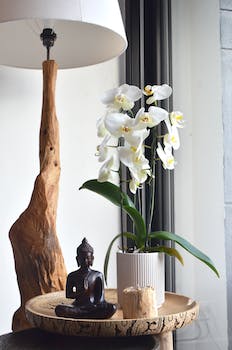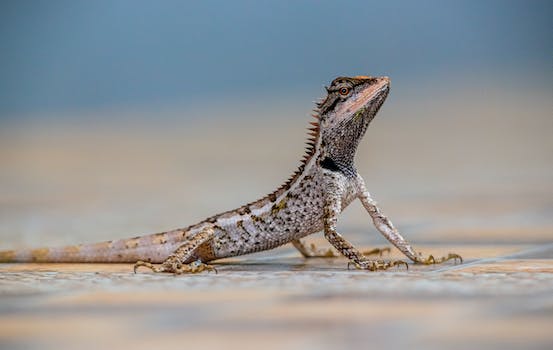

-
Table of Contents
The Ultimate Guide to Choosing Orchids as Houseplants: Your Path to Blooming Beauty.
Introduction
The Ultimate Guide to Choosing Orchids as Houseplants is a comprehensive resource that provides valuable information and guidance for individuals interested in incorporating orchids into their indoor spaces. This guide covers various aspects such as selecting the right orchid species, understanding their care requirements, creating suitable growing conditions, and troubleshooting common issues. Whether you are a beginner or an experienced orchid enthusiast, this guide aims to equip you with the knowledge and confidence to successfully cultivate and enjoy these beautiful and exotic plants in your home.
Different Types of Orchids for Indoor Gardening
Different Types of Orchids for Indoor Gardening
When it comes to choosing orchids as houseplants, there are a wide variety of options available. Orchids are known for their stunning beauty and delicate nature, making them a popular choice among indoor gardeners. However, with so many different types of orchids to choose from, it can be overwhelming to know where to start. In this section, we will explore some of the most popular types of orchids for indoor gardening, helping you make an informed decision.
One of the most common types of orchids for indoor gardening is the Phalaenopsis orchid, also known as the moth orchid. This orchid is known for its large, showy flowers that come in a range of colors, including white, pink, and purple. Phalaenopsis orchids are relatively easy to care for, making them a great choice for beginners. They prefer bright, indirect light and should be watered when the top inch of soil feels dry.
Another popular choice for indoor gardening is the Cattleya orchid. These orchids are known for their vibrant, fragrant flowers that come in a variety of colors, including purple, pink, and yellow. Cattleya orchids require more care than Phalaenopsis orchids, as they prefer bright, direct light and need to be watered regularly. However, with the right care, they can be a stunning addition to any indoor garden.
If you're looking for a more unique orchid, consider the Oncidium orchid, also known as the dancing lady orchid. These orchids have small, delicate flowers that resemble dancing ladies, hence their name. Oncidium orchids come in a range of colors, including yellow, pink, and red. They prefer bright, indirect light and should be watered when the top inch of soil feels dry. With their charming flowers and relatively easy care, Oncidium orchids are a great choice for indoor gardening.
For those who prefer a more compact orchid, the Paphiopedilum orchid, also known as the lady slipper orchid, is an excellent choice. These orchids have unique, slipper-shaped flowers that come in a variety of colors, including yellow, pink, and green. Paphiopedilum orchids prefer low to medium light and should be watered when the top inch of soil feels dry. With their compact size and striking flowers, they are a popular choice for indoor gardeners.
If you're looking for a challenge, consider the Dendrobium orchid. These orchids have long, thin stems and come in a variety of colors, including white, purple, and yellow. Dendrobium orchids require bright, indirect light and should be watered when the top inch of soil feels dry. They also require a period of cooler temperatures to encourage blooming. While they may require more care than other types of orchids, the stunning flowers they produce make it all worth it.
In conclusion, when it comes to choosing orchids as houseplants, there are many different types to consider. From the easy-to-care-for Phalaenopsis orchid to the more challenging Dendrobium orchid, there is an orchid for every indoor gardener. By understanding the specific care requirements of each type of orchid, you can ensure that your indoor garden thrives with these beautiful and delicate plants. So go ahead, choose the orchid that speaks to you and enjoy the beauty they bring to your home.
Essential Care Tips for Orchids as Houseplants

Orchids are known for their stunning beauty and delicate nature, making them a popular choice for houseplants. However, caring for orchids can be a bit challenging, as they have specific needs that must be met in order for them to thrive. In this section, we will provide you with essential care tips for orchids as houseplants, ensuring that you can enjoy their beauty for years to come.
First and foremost, it is important to understand that orchids require the right amount of light to grow and bloom. While they do need light, direct sunlight can be too intense for them and may cause their leaves to burn. Therefore, it is best to place your orchids in a location where they can receive bright, indirect light. East or west-facing windows are ideal, as they provide the right amount of light without exposing the plants to harsh rays.
In addition to light, orchids also need the right temperature and humidity levels to thrive. Most orchids prefer temperatures between 60 and 80 degrees Fahrenheit during the day, with a slight drop at night. It is important to avoid extreme temperature fluctuations, as this can stress the plants. As for humidity, orchids generally prefer humidity levels between 40% and 60%. To increase humidity, you can place a tray of water near your orchids or use a humidifier.
Watering orchids can be a bit tricky, as they have different water requirements compared to other houseplants. Overwatering can lead to root rot, while underwatering can cause the plants to dry out. The key is to find the right balance. Most orchids prefer to dry out slightly between waterings. To determine when to water, you can check the moisture level of the potting mix by sticking your finger about an inch into the soil. If it feels dry, it is time to water. When watering, it is important to thoroughly saturate the potting mix and allow any excess water to drain out.
Fertilizing orchids is another important aspect of their care. Orchids have specific nutrient requirements, and regular fertilization can help promote healthy growth and blooming. It is recommended to use a balanced orchid fertilizer, diluted to half strength, every two weeks during the growing season. During the dormant period, which is usually in the winter, you can reduce fertilization to once a month.
Lastly, repotting orchids is necessary every one to two years, as their potting mix breaks down over time. When repotting, it is important to use a well-draining orchid mix that allows air to circulate around the roots. Gently remove the orchid from its current pot, trim any dead or rotting roots, and place it in the new pot, ensuring that the roots are spread out and not overcrowded.
In conclusion, caring for orchids as houseplants requires attention to their specific needs. Providing the right amount of light, temperature, humidity, and water, as well as regular fertilization and repotting, will help ensure that your orchids thrive and bloom beautifully. With these essential care tips in mind, you can confidently choose orchids as houseplants and enjoy their stunning beauty in your home.
Common Mistakes to Avoid When Growing Orchids Indoors
Common Mistakes to Avoid When Growing Orchids Indoors
Orchids are undoubtedly one of the most beautiful and exotic plants you can grow indoors. With their vibrant colors and delicate blooms, they can add a touch of elegance to any home. However, growing orchids indoors can be a bit challenging, especially for beginners. There are several common mistakes that people often make when caring for these stunning plants. In this section, we will discuss these mistakes and provide you with some tips on how to avoid them.
One of the most common mistakes people make when growing orchids indoors is overwatering. Orchids are not like other houseplants that thrive in moist soil. They are epiphytes, which means they naturally grow on trees and absorb moisture from the air and rain. Therefore, it is crucial to avoid overwatering your orchids. Instead, you should water them sparingly, allowing the potting mix to dry out slightly between waterings. This will prevent root rot and ensure the health of your orchids.
Another mistake that many people make is using the wrong type of potting mix. Orchids require a well-draining mix that allows air to circulate around their roots. Using regular potting soil can suffocate the roots and lead to root rot. Instead, opt for a specialized orchid mix that contains materials like bark, sphagnum moss, or perlite. These materials will provide the necessary drainage and aeration for your orchids to thrive.
Proper lighting is essential for the growth and blooming of orchids. However, another common mistake is exposing them to direct sunlight. While orchids do need bright, indirect light, direct sunlight can scorch their leaves and cause damage. It is best to place your orchids near a window with filtered light or use sheer curtains to diffuse the sunlight. If you notice that your orchids are not blooming, it may be a sign that they are not receiving enough light.
Temperature and humidity are also crucial factors to consider when growing orchids indoors. Many people make the mistake of subjecting their orchids to extreme temperature fluctuations. Orchids prefer a stable temperature between 60 and 80 degrees Fahrenheit during the day and slightly cooler temperatures at night. Additionally, they thrive in high humidity environments. To increase humidity, you can place a tray of water near your orchids or use a humidifier. Avoid placing your orchids near drafts or heating vents, as these can cause temperature fluctuations and dry out the air.
Lastly, neglecting proper fertilization is another common mistake when growing orchids indoors. Orchids require regular feeding to ensure healthy growth and vibrant blooms. However, using the wrong type or amount of fertilizer can harm your orchids. It is best to use a balanced orchid fertilizer specifically formulated for these plants. Follow the instructions on the package and fertilize your orchids every two to four weeks during the growing season. During the dormant period, reduce or stop fertilization to allow your orchids to rest.
In conclusion, growing orchids indoors can be a rewarding experience if done correctly. By avoiding common mistakes such as overwatering, using the wrong potting mix, exposing them to direct sunlight, subjecting them to extreme temperature fluctuations, and neglecting proper fertilization, you can ensure the health and beauty of your orchids. With a little patience and care, you can enjoy the stunning blooms of these exquisite plants in your home for years to come.
Q&A
1. What factors should be considered when choosing orchids as houseplants?
Factors to consider include lighting requirements, temperature preferences, humidity levels, watering needs, and the available space for the orchid to grow.
2. Are there specific orchid varieties that are better suited for indoor cultivation?
Yes, some orchid varieties are better suited for indoor cultivation due to their adaptability to lower light conditions and smaller spaces. Phalaenopsis and Paphiopedilum orchids are popular choices for indoor growing.
3. How can one ensure successful orchid care and maintenance as houseplants?
Successful orchid care involves providing the right amount of light, maintaining appropriate temperature and humidity levels, watering properly, fertilizing regularly, and repotting when necessary. Regular monitoring and addressing any issues promptly are also important for maintaining healthy orchids.
Conclusion
In conclusion, The Ultimate Guide to Choosing Orchids as Houseplants provides comprehensive information and guidance for individuals interested in keeping orchids as indoor plants. It covers various aspects such as selecting the right orchid species, understanding their care requirements, and troubleshooting common issues. With its detailed instructions and tips, this guide serves as a valuable resource for both beginners and experienced orchid enthusiasts looking to enhance their indoor gardening skills.












